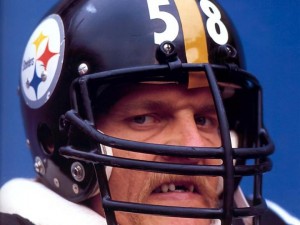No group of college football fans, not even Texans, celebrate the sacred autumn rites of Saturday football at a higher volume than our brothers and sisters of the SEC. And the five national championships claimed by SEC football teams in the last decade have supplied their fans with more than enough ammunition to load up their gridiron boasts before they blindly lob them over state lines—a popular SEC pastime.
Hans Hetrick
The perceived gap between the SEC and other power conferences, while a tiny gap exists, has become extremely overblown. We’ve heard it all before. SEC speed overwhelms the whole milk drinkers in the Big 10. The Big 12’s got a weak bottom, but there’s not a cupcake to be found in the SEC. The PAC 10? Oh, you mean USC. And ACC football was created for recruits that can’t get on a SEC depth chart.
The truth is far from perception, and in order to yank perception a little closer to reality, I’d like to point out a little discussed fact about those five national championships.
The time has come to remind our SEC college football brethren, like Abraham Lincoln a century and a half ago, that monumental success—such as five national titles in ten years—can only be attained on the strength of a union of states, by reaping the best talent and resources from across our great nation. It’s time the college football nation is made aware that each of those five national titles were claimed with coaches who possess deep northern roots at the helm.
I am, of course, speaking of Nick Saban, Urban Meyer, and Les Miles. None of who grew up on okra and biscuits and gravy.
Do Florida fans know that Urban Meyer proudly displays a portrait of Woody Hayes in his Gainesville home? Do Alabama fans know that Nick Saban planned to attend the anit-war protest at Kent State the day of the infamous 1970 Kent State shootings? Yes, Alabama fans, your football coach is a hippie.
It would take a white paper to account for all of Nick Saban’s jobs. He’s had more addresses than a hobo. Still, here’s a quick summary.
Nick Saban began his coaching career at Kent State University in Ohio under the tutelage of the legendary, Don “The Dawgfather” James. After three years as a defensive back, Saban remained in Kent for four more years, first, as a graduate assistant and then as linebacker coach. The Dawgfather left Kent for the University of Washington and a hall of fame career, winning two national titles and compiling a 178-76-3 career record.
In 1983, Saban landed in East Lansing to begin a five year stint under his second meaningful mentor, Michigan State coach George Perles. Perles, a defensive line coach and defensive coordinator for the Pittsburgh Steelers during the Steel Curtain years, brought the Spartans back to glory in the late 80s and early 90s with seven bowl appearances and two Big Ten championships.
Before Saban wound up in Baton Rouge for the first of his national championships, he led the University of Toledo Rockets for one impressive season, and served as head coach at Michigan State for five years.
Urban Meyer is an Ashtabula, Ohio native. After playing defensive back for the University of Cinncinati, Meyer started his coaching career at Cincinnati high school powerhouse St. Xavier. Next, Meyer moved upstate and became a graduate assistant at Ohio State where he formed a very close bond with Buckeye coach Earle Bruce.
Bruce’s extreme frankness, loyalty to his players and assistants, integrity, and hands-on coaching style proved to be very influential on Meyer. Urban followed Bruce to Colorado State after Earle’s inexplicable firing at Ohio State. Meyer has often referred to Bruce as his second father.
Meyer also spent five years as an assistant at Notre Dame, including one under Lou Holtz. He has said that the head coach position at Notre Dame is his dream job, after all he is named after a pope. But Florida fans shouldn’t fret. Leaving Florida for Notre Dame would be like leaving Penelope Cruz for Mother Teresa.
Les Miles, the red-headed stepchild of the three, was born in Elyria, Ohio, but he’s a Michigan man through and through. A a two year letterman for a big time college football program, Miles is probably the best athlete of the three. Miles played for the bigger-than-life Bo Schembechler, and returned five years later to join Schemblechler’s staff.
After two years with Bo, Miles followed fellow Michigan assistant Bill McCartney in 1982, to the University of Colorado where McCartney had accepted the head coaching position. There, he helped McCartney raise the Buffaloes from the ashes. After five years, Miles returned to Michigan, while McCartney stayed in Boulder to put Colorado football on the map and win the 1991 national championship.
This announcement (that SEC football isn’t the Vatican City of college football) and the facts herein (that the SEC seems to require coaches from outside the conference to win national championships-Fulmer and Spurrier won a long time ago) will do nothing to diminish the barrage of boasts fired from decks of the SEC contingent, but hopefully, it can provide some solace to the remainder of fans in the college football community. And the next time the SEC air raid sirens sound, we can allow ourselves a sly smile before we respond.










